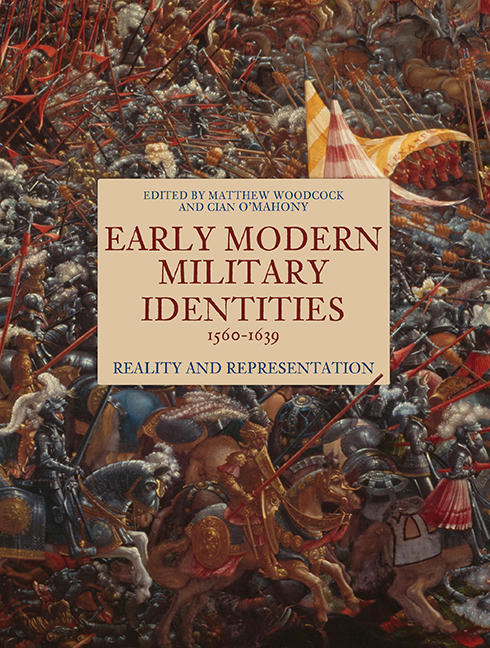Afterword: The Way Ahead
Published online by Cambridge University Press: 14 September 2019
Summary
One of the aims of this collection has been to stimulate subsequent discussion and investigation of military identity and to foster further interdisciplinary studies of early modern warfare and its representation. One is aware, of course, that there are many other directions in which subsequent studies of military identity can be taken and that the geographic, temporal and thematic coverage could be expanded further. Although several of the chapters above discuss the significance of differences between English, Old English and Irish military identities, analysis could equally focus on the fighting men of Spain, France, the Low Countries, Italy, Germany, Sweden, or the Ottoman Empire, as well as expand beyond Europe to consider those in the New World or Japan. Nearer to home, although Robert Monro was mentioned in the introduction above, it would be instructive to further examine the distinct military identity of Scottish soldiery and, indeed, both the Scots and Irish regiments active in continental Europe in the sixteenth and seventeenth centuries, as part of a wider British military identity. The study of regimental identity obviously complements the broader explorations of collective military identity discussed in the essays above. It can also be set alongside other forms of martial communities found in this period in, say, garrisons (Calais, the Dublin Pale) or military societies (for example, the London Artillery and Military Garden companies).
It is easy to envisage subsequent studies that look beyond this collection's temporal scope and address military identity, citizen soldiery and martial professionalism during the Civil Wars of the 1640s, and beyond. In terms of specific stereotypes of military identities adopted and ascribed in this later period, it would be productive to discuss the figure of the cavalier in relation to that of the swordsman mentioned above, and to consider certain exemplars of this type, such as Prince Rupert of Bohemia or Sir William Cavendish. To broaden the thematic range of future studies of our core concept, following the lead of Andreani and Hadfield's essay, attention needs to be given to non-combatants who formed part of what Lynn calls a ‘campaign community’, be it, say, as military surveyors or surgeons.
- Type
- Chapter
- Information
- Early Modern Military Identities, 1560–1639Reality and Representation, pp. 280 - 282Publisher: Boydell & BrewerPrint publication year: 2019



